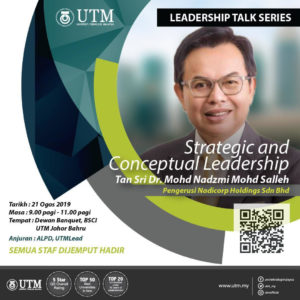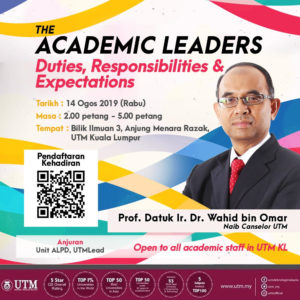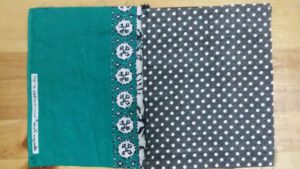Sihat dan bahagia di tempat kerja
There is a talk on how to stay healthy and happy at work. The slides notes are HERE.
Stay healthy and happy at your work? For me, it is kind of subjective. It is all back to intention (why). Nothing else matters.
According to Prophet Muhammad SAW hadith as reported by Umar ibn al-Khattab:
The Messenger of Allah, peace and blessings be upon him, said, “Verily, deeds are only with intentions. Verily, every person will have only what they intended. Whoever emigrated to Allah and his messenger, his emigration is for Allah and his messenger. Whoever emigrated to get something in the world or to marry a woman, his emigration is for that to which he emigrated.”
Source: Ṣaḥīḥ al-Bukhārī 54, Ṣaḥīḥ Muslim 1907
Grade: Muttafaqun Alayhi (authenticity agreed upon) according to Al-Bukhari and Muslim
عَنْ عُمَرَ بْنِ الْخَطَّابِ قَالَ قَالَ رَسُولُ اللَّهِ صَلَّى اللَّهُ عَلَيْهِ وَسَلَّمَ إِنَّمَا الْأَعْمَالُ بِالنِّيَّةِ وَإِنَّمَا لِامْرِئٍ مَا نَوَى فَمَنْ كَانَتْ هِجْرَتُهُ إِلَى اللَّهِ وَرَسُولِهِ فَهِجْرَتُهُ إِلَى اللَّهِ وَرَسُولِهِ وَمَنْ كَانَتْ هِجْرَتُهُ لِدُنْيَا يُصِيبُهَا أَوْ امْرَأَةٍ يَتَزَوَّجُهَا فَهِجْرَتُهُ إِلَى مَا هَاجَرَ إِلَيْهِ
54 صحيح البخاري كتاب الإيمان باب ما جاء إن الأعمال بالنية والحسبة ولكل امرئ ما نوى
1907 صحيح مسلم
Academic Leaders: Duties, responsibilities and expectations
Kelestarian: Di manakah kita?
Go Green, Go White
Sustainability
This month engagement emphasises on the theme “sustainability”. For me, to be sustainable is to be true to oneself in reference being an ‘Abd.
Third hand-sewn pouch
I showed my pouch to some of my colleagues. They are quite amazed that I have a time to sew a pouch. I told them that I only take few hours to complete one pouch. Dr Narina and Dr Norah asked me if I make the pouch for sale. Err… nope. It is not for sale.
Why am I having this new hobby? I need to use my fingers to enhance (or at least maintain) my fine motor skills. I know that I am not getting any younger. I find myself having muscle strain on my hand/fingers whenever I use my laptop/mouse or handphone longer than I should with no intermittent break. This is not good. So, I need to strengthen my fine motor skills. I don’t want to do some exercise per se without seeing any tangible product/result. What is the best way to unwind and at the same time, I can get tangible result? Other than gardening, it is sewing. Back to basic.
As I am already in my “4 series” age, to put a thread in a needle is challenging but I try my best to keep myself occupied with non-academic work-related stuff. I know that some might perceive this as counter-productive, but what a heck. I need to keep my life in balance. I need to relax and unwind, doing something “productive”. 😀
So, now I have two polka dot pouches. Identical. One is slightly bigger size. For the small pouch, I use 8inch zipper and for the bigger pouch I use 10inch zipper. It does make a bit difference. I don’t know what I will put inside the bigger pouch. Perhaps I will use it to put my mouse and laptop charger.
[Psstt… this is hand-sewn so to make it A4 size might take longer than few hours]
Remote supervision evaluation
I had a chance using skype to evaluate remote supervision students from afar with my three colleagues from School of Education: Dr Norah, Dr Narina and Dr Husna. A new thing for me. Normally, I use to have face-to-face proposal defense or viva but today, it is different. Yup. Teleconference style of viva.
It is not easy. It depends on internet connection. But, this will be an in-thing now and in the future. So, I need to get used to it. Kudos to Graduate School staff who set up the skype thingy and oversaw the overall process of evaluation.
Come join us to do your PhD and Masters in Engineering Education at UTM
Confusion
It is quite normal to feel confused at times due to various reasons. But some time, we can avoid being confused if we have enough information about something and this could lessen or decrease our anxiety as well. Unfortunately, there might be cases whereby certain information is not well-circulated and thus create confusion (unnecessarily). This is what happened to me and some of my colleagues.
Last July, my colleague and I had to handle a session involving remote supervision students. Even though there is no appointment letter from the Graduate School (until now aka the time of writing), I just proceed with the session together with my friend (she got an appointment letter though). So, the students have to take several classes and whatsnot and they have to present their mini proposal. Sound familiar, right? The way remote supervision is conducted is similar with the normal programme for full research students who have to attend MPPU100, MPPU1070 and MPPU1080. The only difference is the code they use. For the remote version of MPPU1060, the code is UHPP0010. There you go.
Apparently, there are two groups or batches of students undergoing this remote supervision. However, many of us who are the facilitators do not have sufficient information about this programme i.e. remote supervision. So, when some of my senior colleagues asked me why I was not present at certain sessions (as if I am purposely absent from those sessions), I was perplexed because I wasn’t informed about those sessions.
Well, the thing is, I believe that if I am needed, I will get the appointment letter or whatever. Just informing me through WhatsApp messages is unofficial. I am not being demanding or anything, but I think that we should do things properly. It is unfair to perceive me as indifferent whereas I do not have any clue or idea about the programme organised by the school or faculty which is meant only for selected people. I realise that I cannot expect that I will be involved in every single programme organised by the school or faculty. After all, I have my own little projects with the school (consider this as after-Latihan-Ikhtisas-service to the school) 😀







